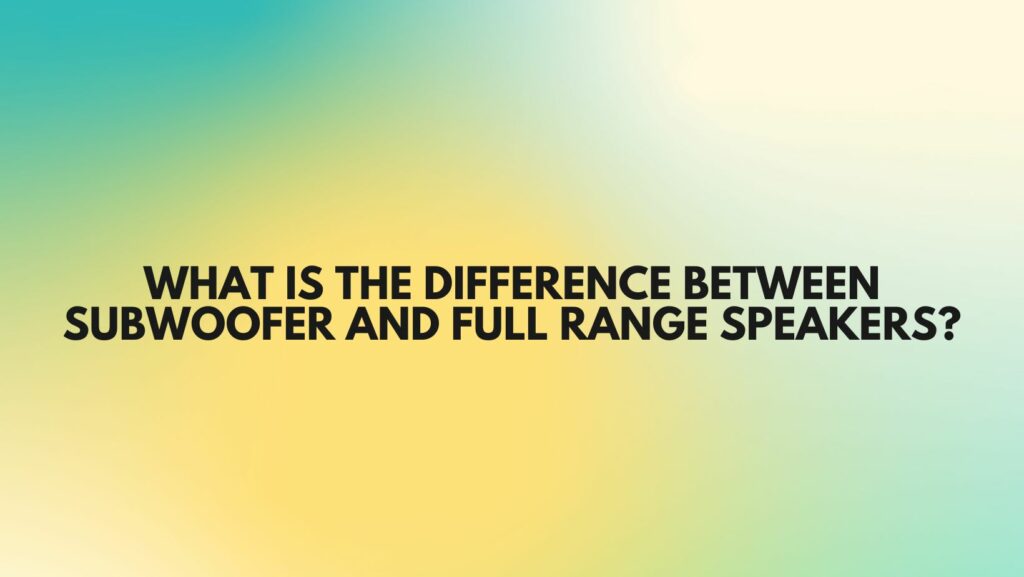In the world of audio reproduction, speakers come in various shapes and sizes, each serving a distinct purpose in delivering immersive sound experiences. Among the most commonly discussed are subwoofers and full-range speakers. Understanding the differences between these two types of speakers is crucial for optimizing audio setups and achieving balanced sound reproduction. In this article, we delve into the nuances that distinguish subwoofers from full-range speakers, shedding light on their unique characteristics and applications.
Subwoofers: Delving into Deep Bass Reproduction Subwoofers are specialized speakers designed specifically to reproduce low-frequency bass content. They excel at delivering deep, resonant bass frequencies that add depth and impact to audio experiences. Subwoofers typically operate in the frequency range below 200 Hz, focusing on reproducing the lowest octaves of the audio spectrum. Their drivers and enclosures are optimized for efficient bass reproduction, with features such as large cones, powerful magnets, and ported or sealed enclosures to enhance bass response.
Full-Range Speakers: Versatility Across the Frequency Spectrum Full-range speakers, as the name suggests, are designed to reproduce a wide range of audio frequencies, from low bass to high treble. Unlike subwoofers, which specialize in bass reproduction, full-range speakers aim to provide balanced sound reproduction across the entire audio spectrum. They feature drivers capable of handling mid-range and high-frequency content, often complemented by tweeters for crisp high-end response. Full-range speakers offer versatility and flexibility, making them suitable for a variety of audio applications, including music playback, movie soundtracks, and gaming.
Key Differences Between Subwoofers and Full-Range Speakers:
- Frequency Range: The primary distinction between subwoofers and full-range speakers lies in their frequency range. Subwoofers focus on reproducing low-frequency bass content, typically below 200 Hz, while full-range speakers aim to cover the entire audio spectrum, from deep bass to high treble.
- Driver Design: Subwoofers are equipped with specialized drivers optimized for bass reproduction, featuring large cones and powerful magnets to move large volumes of air. Full-range speakers may incorporate multiple drivers, including mid-range drivers and tweeters, to reproduce a broader range of frequencies with clarity and accuracy.
- Enclosure Design: Subwoofers often feature ported or sealed enclosures designed to enhance bass response and minimize distortion. Full-range speakers may employ various enclosure designs, including bass-reflex, sealed, and transmission line enclosures, to optimize acoustic performance across the frequency spectrum.
- Application: Subwoofers are typically used to augment the bass performance of audio systems, providing depth and impact to music, movies, and multimedia content. Full-range speakers are more versatile and can serve as standalone speakers or integrated components in audio systems, offering balanced sound reproduction for various applications.
Conclusion: In conclusion, subwoofers and full-range speakers serve distinct roles in audio reproduction, each offering unique characteristics and applications. While subwoofers specialize in deep bass reproduction, full-range speakers provide balanced sound reproduction across the entire audio spectrum. By understanding the differences between these two types of speakers, enthusiasts can optimize their audio setups and achieve immersive sound experiences tailored to their preferences and listening environments.


